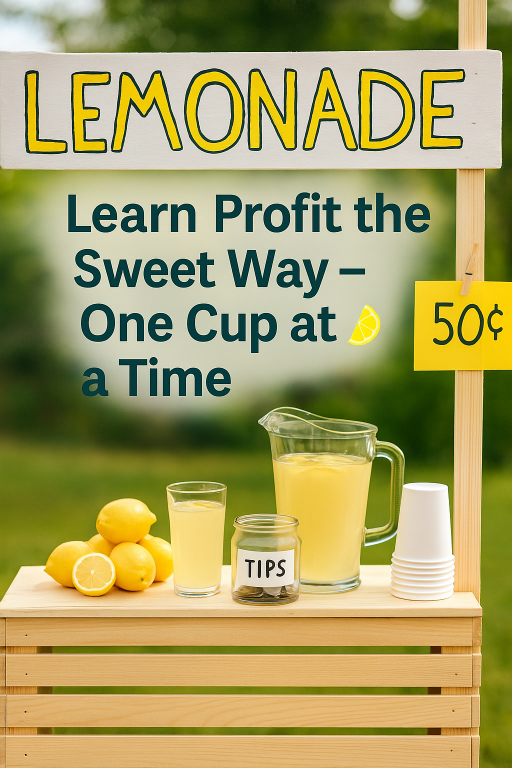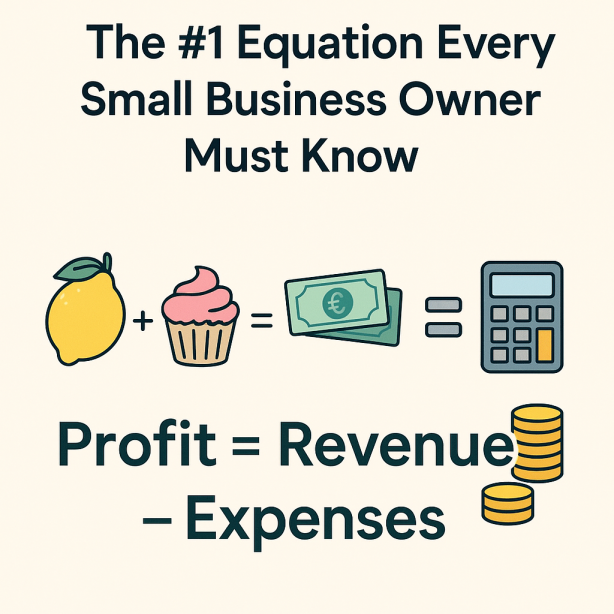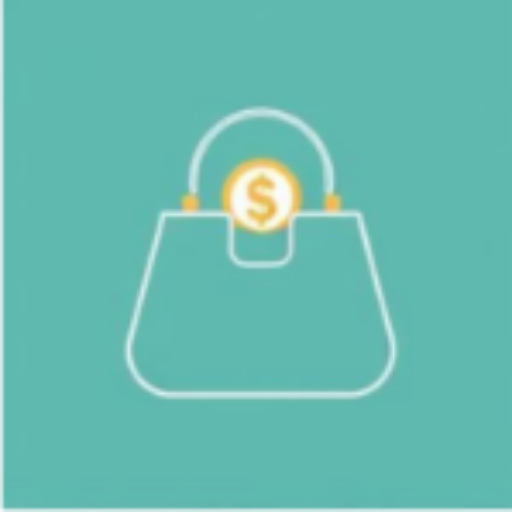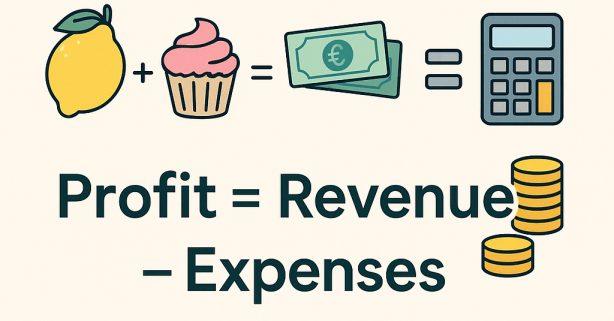Small Business Profit Made Simple: The Lemonade Stand Example
In this article, I’ll show you how to calculate profit for a small business using my son’s lemonade stand as an example.
When life gives you lemons, make a lemonade stand.
-SmartyPurse

Welcome, smarty-purse reader! If you’ve ever thought about starting a small business or side hustle but felt overwhelmed by financial planning, this is for you. Whether you’re launching a pop-up stand, a craft booth, or an online shop, understanding how to calculate profit is essential — and easier than you think.
Through this simple, real-life story, you’ll learn about key concepts like revenues, fixed and variable costs, profit margins, and the one equation that underpins it all.
Let’s start with the foundation of every successful business.
The Income Equation: Your Business Profit Formula
Whether it’s for your personal finances or a company, the income equation is universal:
Or in everyday terms:
This simple formula is the cornerstone of financial planning. Master it, and you’ll understand how any business — even a much more complex one than a lemonade stand — succeeds or fails.

Step 1: Create a Simple Business Plan (Lemonade Stand Example)
My son is launching a lemonade stand at his school’s Christmas market. It’s a great chance to teach him how to think like an entrepreneur.
Here’s his plan:
- He wants to sell 50 cups of lemonade.
- The school space is free, so no rent.
- He’ll run the stand himself — no labor costs.
- Ingredients and supplies must be bought up front.
Let’s look at the costs.
| Expense Item | Price per Item (€) | Quantity | Total (€) |
|---|---|---|---|
| Strawberry syrup | 5 | 5 | 25 |
| Elder-flower syrup | 4 | 5 | 20 |
| Paper cups (50 pack) | 2 | 1 | 2 |
| Sparkling water (1L) | 1 | 10 | 10 |
| Stand rent | — | — | 0 |
| Labor cost | — | — | 0 |
| Total Startup Cost | 57 |
This €57 is his startup capital. Since he doesn’t have it, I’m lending it to him interest-free. In the real world, you’d borrow from a bank or invest your own savings — and possibly owe interest.
Step 2: Calculate Cost Per Item
To find the cost per cup of lemonade:
Always include every expense, and don’t forget to assign value to your time. Even if you don’t pay yourself now, your time isn’t free.
Step 3: Understand Fixed vs. Variable Costs
Before setting prices, it helps to know the two types of business expenses:
- Fixed Costs stay the same no matter how much you sell (for example, renting a stand or paying for a business license).
- Variable Costs rise the more you sell (ingredients, packaging, supplies).
In our lemonade stand:
- Fixed Costs: Stand rent (in this case €0, but often it’s a fixed number)
- Variable Costs: Syrups, water, and cups — because the more lemonade you sell, the more supplies you need.
Understanding this difference helps you plan smarter and price better!
Step 4: Set a Price That Covers Costs and Leaves Profit
Not to put pressure on my son but this is the most important decision he has to make. There are many factors that come into play – How much does a lemonade cup cost on average? Is someone else going to sell drinks at the Christmas market? How highly he values his time and effort? How certain he is that he is going to sell 50 cups and not less?
Setting the price too low is one of the most common reasons why startup businesses fail. A startup is risky, most startups fail, you have heard this a million times. So do not put the price too low, it is very difficult to increase it after but very easy to discount it.
Setting the right price is the most important decision. My son chose €2 per cup — about 1.75x his cost. That gives him a buffer and room for profit.
Too many startups underprice in hopes of attracting customers — but if your price is too low, you may not survive long enough to grow.
Step 5: Calculate Profit and Profit Margin
Let’s explore two scenarios: one with full sales, one with less-than-expected sales.
Scenario A: Sells All 50 Cups
- Revenue: 50 × €2 = €100
- Expenses: €57
- Profit: €43
- Profit Margin = 43 / 100 = 43%
Scenario B: Sells Only 30 Cups
- Revenue: 30 × €2 = €60
- Expenses: €57
- Profit: €3
- Profit Margin = 3 / 60 = 5%
This scenario still gives a business profit — and a powerful learning experience. Many first-time businesses break even or lose money. Covering costs and earning even a small margin is a win.
Step 6: Find Your Breakeven Point
The breakeven point is the number of sales you need to make just to cover your costs — no profit, no loss.
Breakeven Formula:
In our lemonade stand:
- Selling Price: €2
- Cost per Cup (variable costs only): about €1.14
- Fixed Costs: €0 (no stand rent)
Even without fixed costs, it’s useful to think:
How much do you need to sell just to cover your spending?
If you were selling cupcakes, for example, and renting a stall for €30 with cupcakes costing €1 each and selling for €3, you’d need:
Sell at least 15 cupcakes to cover costs before making any profit.
Step 7: How to Increase Profit in a Small Business
This is the key lesson: if you want to earn more, you need to increase revenue, reduce expenses, or both.
Here are ideas my son and I came up with:
Increase Revenue
- Raise the price to €2.50 per cup.
- Advertise ahead of time — posters, word-of-mouth.
- Offer free samples to draw a crowd.
- Walk the market to bring in customers.
- Discount late in the day to clear remaining stock.
Reduce Costs
- Find cheaper syrups (they’re the biggest expense).
- Use still water or make your own sparkling.
- Sell leftover supplies online or to classmates.
Small changes can make a big difference — and they work for real businesses too.
Final Thoughts: Start Small, Think Big
If this is your first time starting a small business, don’t worry if everything isn’t perfect right away. Every entrepreneur’s first project is full of lessons. The important thing is to start, learn, and improve.
By understanding how to calculate profit for a small business, you’re already miles ahead.
Plan carefully, think through your costs and prices, and never forget:
Higher Revenues + Lower Expenses = Higher Income.
You’re building not just a business, but the foundation for your happy, rich, and free life.
If you enjoyed this post, feel free to leave your thoughts or your own lemonade (or cupcake!) stand ideas in the comments!
Special Credits: For creating the formulas in this blog post, I used https://www.text2latex.com/

